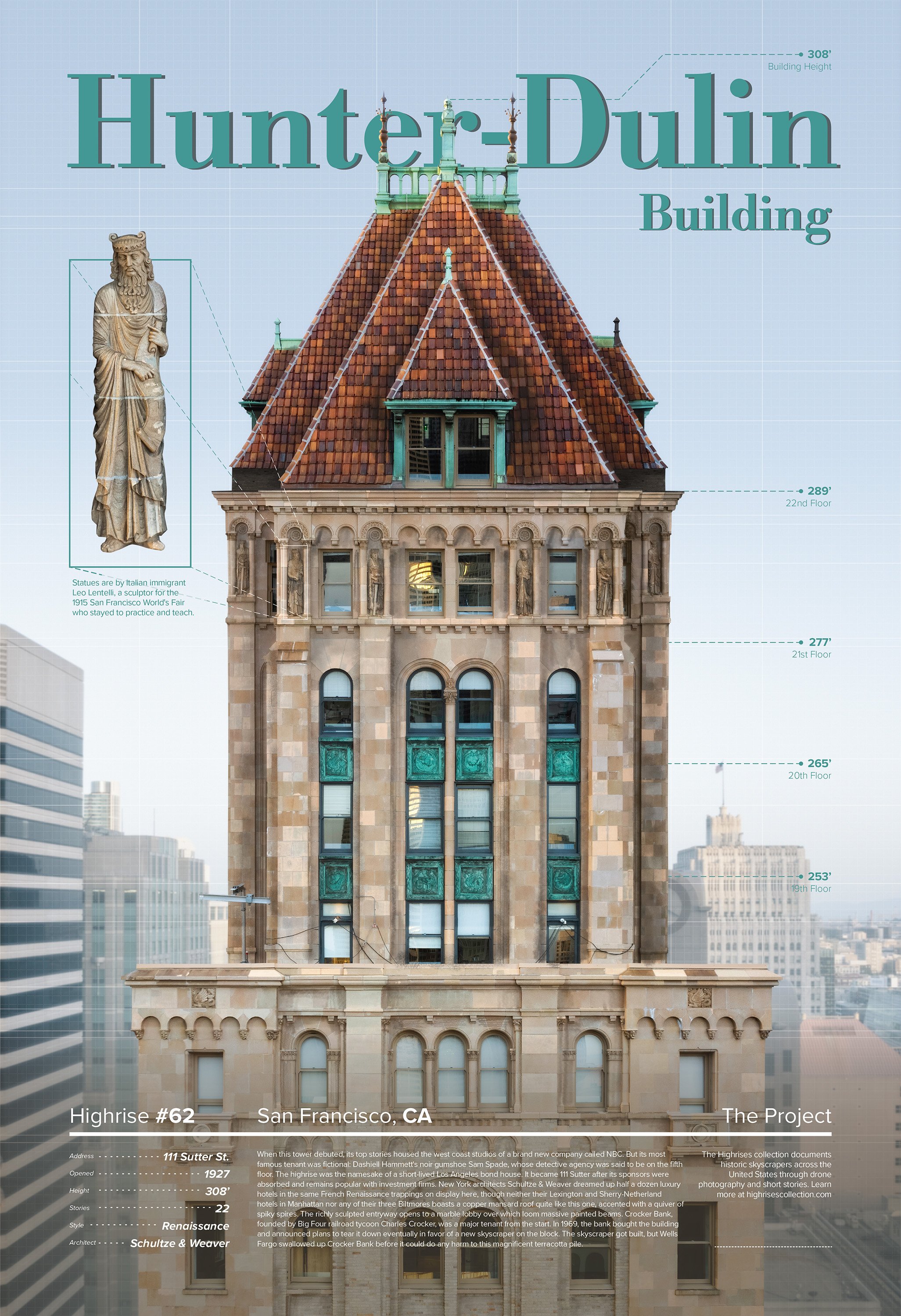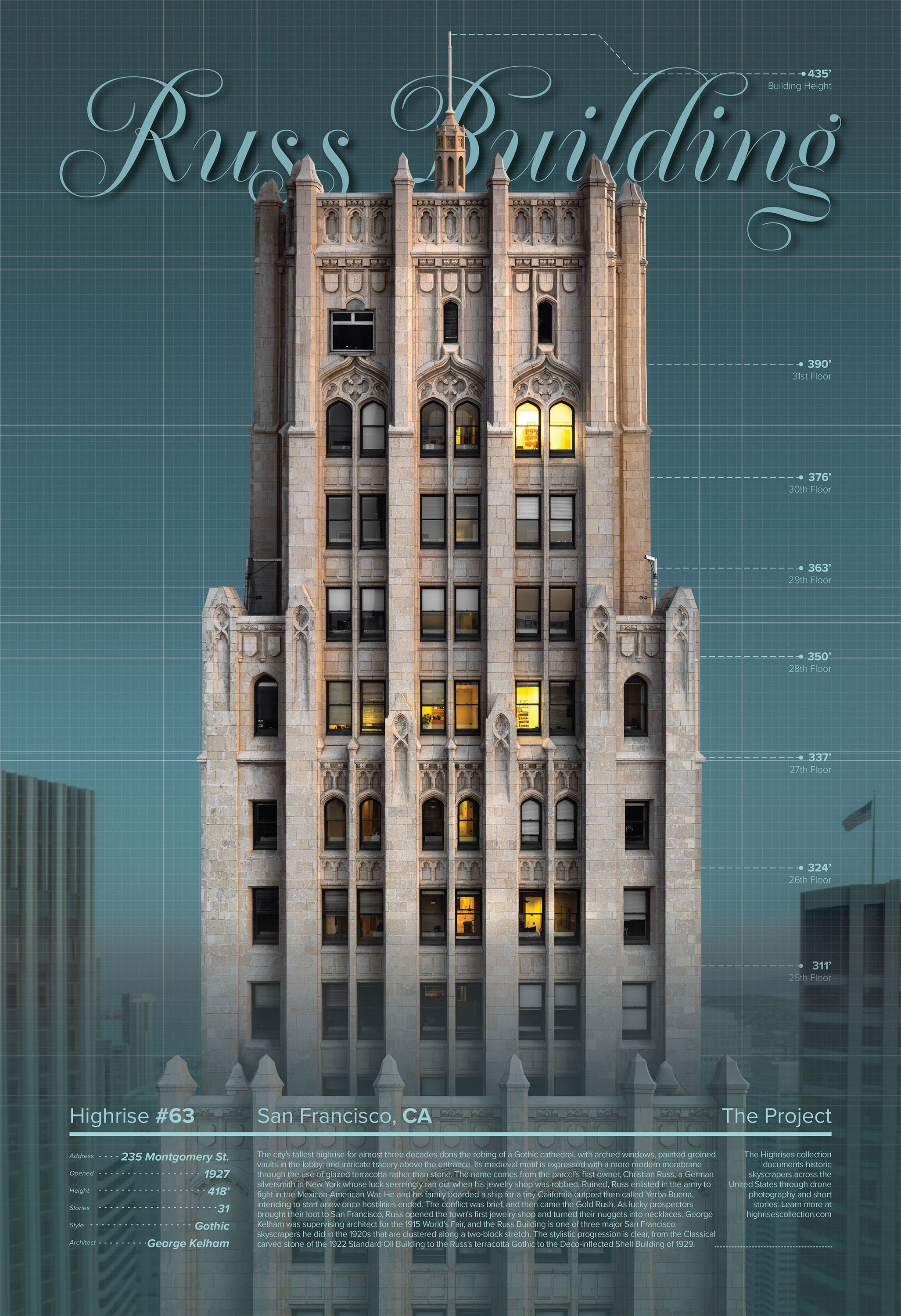5 Beautiful Bay Area Buildings
Images by Chris Hytha
Writing by Mark Houser
As the first great city of the West Coast, San Francisco boasts a spectacular collection of classic skyscrapers. Some even survived the devastating 1906 fire and earthquake. Many more arose in the Roaring Twenties, and the city's tradition of daring and innovative architecture continued with Transamerica Pyramid and now Salesforce Tower. Across the bay, Oakland also erected several noteworthy and impressive highrises in the early 20th century.
Union Ferry Depot
(Ferry Building)
San Francisco, CA
Transcontinental railroad travelers ended their westward journey not by train but by boat at this station, which handled up to 47 million passengers a year. When the 1906 earthquake struck, it stopped the 22-foot clock, but the terminal and tower survived largely intact, much to the relief of refugees forced to flee across the bay.
New York architect A. Page Brown snagged the job after designing a tomb for Charles Crocker, president of the Southern Pacific Railroad, which supplied most ferry traffic. Politicians worried over the bidding, and Brown's payment was frozen during construction; before the dispute was resolved, he died from injuries sustained after his horsecart went off a bridge.
Bridges — the Bay and the Golden Gate — also killed off ferry service. An elevated Embarcadero Freeway added insult to injury, barricading the building from Market Street. Demolition talk roused defenders like Herb Caen, who wrote: "The waterfront without the Ferry Tower would be like a birthday cake without a candle." Ironically, another earthquake essentially saved the structure — the 1989 Loma Prieta tremor so damaged the freeway that it was razed, releasing the forlorn terminal from its isolation.
It has since had an extensive facelift and has been reborn as a marketplace, the handsome grand nave illuminated by its original 660-foot skylight. Even the ferries have returned.
Hunter Dulin Building
(111 Sutter)
San Francisco, CA
When this tower debuted, its top stories housed the west coast studios of a brand new company called NBC. But its most famous tenant was fictional: Dashiell Hammett's noir gumshoe Sam Spade, whose detective agency was said to be on the fifth floor.
The highrise was the namesake of a short-lived Los Angeles bond house. It became 111 Sutter after its sponsors were absorbed and remains popular with investment firms. New York architects Schultze & Weaver dreamed up half a dozen luxury hotels in the same French Renaissance trappings on display here, though neither their Lexington and Sherry-Netherland hotels in Manhattan nor any of their three Biltmores boasts a copper mansard roof quite like this one, accented with a quiver of spiky spires. The richly sculpted entryway opens to a marble lobby over which loom massive painted beams.
Crocker Bank, founded by Big Four railroad tycoon Charles Crocker, was a major tenant from the start. In 1969, the bank bought the building and announced plans to tear it down eventually in favor of a new skyscraper on the block. The skyscraper got built, but Wells Fargo swallowed up Crocker Bank before it could do any harm to this magnificent terracotta pile.
Russ Building
San Francisco, CA
The city's tallest highrise for almost three decades dons the robing of a Gothic cathedral, with arched windows, painted groined vaults in the lobby, and intricate tracery above the entrance. Its medieval motif is expressed with a more modern membrane through the use of glazed terracotta rather than stone.
The name comes from the parcel's first owner, Christian Russ, a German silversmith in New York whose luck seemingly ran out when his jewelry shop was robbed. Ruined, Russ enlisted in the army to fight in the Mexican-American War. He and his family boarded a ship for a tiny California outpost then called Yerba Buena, intending to start anew once hostilities ended. The conflict was brief, and then came the Gold Rush. As lucky prospectors brought their loot to San Francisco, Russ opened the town's first jewelry shop and turned their nuggets into necklaces.
George Kelham was supervising architect for the 1915 World's Fair, and the Russ Building is one of three major San Francisco skyscrapers he did in the 1920s that are clustered along a two-block stretch. The stylistic progression is clear, from the Classical carved stone of the 1922 Standard Oil Building to the Russ's terracotta Gothic to the Deco-inflected Shell Building of 1929.
Oakland City Hall
Oakland, CA
Colloquially known as “Mayor Mott’s wedding cake,” the first city hall to be built as a skyscraper seems almost good enough to eat, with white granite walls drizzled with terracotta icing. The matrimonial moniker originated in the mayor's surprise nuptials to a Berkeley schoolteacher while construction was underway.
Frank Mott is best remembered for helping his city shelter 150,000 homeless San Francisco earthquake victims in 1906. The busy executive also wrested control of the waterfront and port from the railroad, expanded city parks and dredged the tidal basin known as Lake Merritt, inaugurated a civil service system, reorganized the police and fire departments, and established Oakland's first city museum.
Besides elegant, high-ceilinged council chambers, the highrise houses courtrooms, various municipal departments and offices, a medical ward, and behind the slit windows lining the top floor beneath the clock tower, jail cells. Built of reinforced concrete to be earthquake proof, the skyscraper suffered severe seismic stress in 1989 and was retrofitted with a new steel skeleton and placed on a floating foundation. A memorial oak tree in front was planted in memory of the novelist and socialist activist Jack London, whom Mott defeated in the 1905 mayoral race.
Tribune Tower
Oakland, CA
The newspaper it advertises ceased to exist, but this campanile-style tower encircled in electric orange neon remains a treasured element of the Oakland skyline. Its former owners were politicians who both turned to publishing after their reach for higher office exceeded their grasp.
Alameda native Joseph Knowland, son of a prosperous lumber merchant, served six terms as a Republican congressman, then bought the Oakland Tribune after losing a race for senator. He relocated the paper to a six-story furniture company showroom in 1918, added the tower five years later, and began grooming his son, William, for bigger things. The younger Knowland got as far as senate majority leader, but flopped in an ill-advised run for governor in 1958. Succeeding his father as publisher, Knowland became increasingly burdened by gambling debts. In 1974, two days after commemorating the newspaper's 100th anniversary, he shot himself.
The elevator goes to the 20th floor, where radio station KLX once had its studios behind the clock. Up two flights of unfinished stairs is the workshop of neon light caretaker and renegade artist John Law, one of the founders of Burning Man.
The Northeast Collage Poster
Only $19.99
Decorate your space with this 20” x 30” architecture collage poster featuring Highrises from 18 cities across the Northeast, including Philadelphia, Boston, Baltimore, Newark, Pittsburgh, Buffalo, and more. Each image comes from the Highrises collection of high-res artistic composite drone photography digitally enhanced for incredibly detailed views of these attractive antique skyscrapers.








